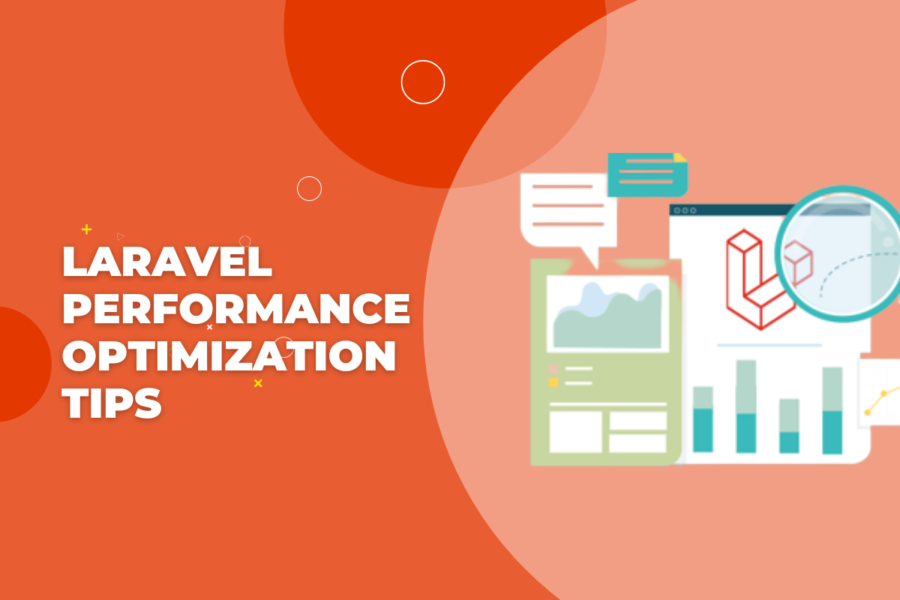A fairly high percentage of web developers favor Laravel over other PHP frameworks, according to use statistics published on several websites. Laravel, in addition to being a current web framework, has been continually expanding to meet emerging web application development trends. Laravel’s libraries and tools assist web developers in the automation of standard web development activities such as database operations, session management, authentication, file system management, routing, and unit testing. Every new version of Laravel adds various new features to help accelerate the building of custom web applications.
However, the extra functionalities hurt the effectiveness and speed of Laravel apps. Nowadays, a big percentage of visitors skip websites that do not load in 3 seconds. Additionally, when ranking websites, Google regards loading speed as a major search indication. As a result, developers must optimize Laravel applications to reduce user dissatisfaction and increase search engine traffic. Many developers choose the lightweight version of Laravel – Lumen micro-framework to reduce page load time. However, by using some simple strategies, a PHP programmer can easily boost the performance of Laravel applications.
7 Laravel Performance Optimization Tips to Improve Laravel Application Performance
Getting the Most of Expert Optimization Commands
Laravel allows developers to simplify web application development by executing helpful tasks via Artisan, a powerful command-line interface. Developers may even optimize Laravel applications by using Artisan optimization instructions. These instructions allow developers to improve optimized files, combine often-used classes into a single file, combine all configurations into a single file, and generate a route cache file to help the Laravel application load faster.
Switch to Eager Loading
Laravel’s Elegant object-relational mapper makes it easy for programmers to deal with numerous databases and conduct standard database operations (ORM). Eloquent’s lazy loading strategy has an impact on the performance of Laravel apps. The technique receives data only when the code explicitly references it. As a result, the application must run more queries to retrieve and transmit data. Developers may quickly speed up the Laravel application by using eager loading instead of lazy loading. When the query is conducted for the first time, the quick loading strategy does not require the applications to execute additional queries by retrieving data and related object models.
Remove Unnecessary Services and Plug-ins
A PHP programmer can quickly disable a variety of services without impacting the functionality of the web application. He can easily disable the unused services by commenting out individual service providers in the config/app.php file. Furthermore, he must evaluate the Laravel plug-ins and identify those that are not required by the web application. By loading additional files and libraries, each plug-in influences the speed of Laravel apps. By removing useless Laravel plug-ins, programmers can simply reduce the number of files and libraries loaded.
Pre-compile Web Application Resources
When developing online applications, programmers frequently save website assets in several files to rapidly modify and update the code. However, the additional files have a significant influence on the performance of the Laravel application after deployment. By organizing website assets in a few files, developers can rapidly speed up the Laravel development services. Laravel even allows developers to pre-compile website assets using the Artisan command. Developers can use artisan commands to pre-compile website assets, as well as integrate frequently used classes, configuration files, and routes.
Implement Caching
By offering a single API, Laravel makes it simpler for PHP programmers to interact with different caching solutions and back-ends. Therefore, by employing powerful caching tools like Redis and Memcached, developers can rapidly increase the performance of a Laravel application. By using particular Artisan commands, they can potentially choose to cache both routes and configurations. They can use the Artisan command to store and refresh route caches as well as migrate routes to the controller. Caching can be implemented in a variety of methods by PHP programmers depending on the needs of the web application.
Execute Code through a JIT Compiler
PHP code is not natively understood by computers, thus programmers must interpret it and compile it into byte code using compilers. The performance and user experience of Laravel applications are impacted by the code compilation process. By switching a reliable just-in-time (JIT) compiler with HHVM for Zend Engine, a web developer can quickly speed up the compilation of PHP code. HHVM is an open-source virtual machine that also uses a JIT compiler to compile PHP code. Even the PHP code is rapidly and just once compiled.
Compress Response Data
Compressing response data is a simple way for Laravel PHP programmers to make the application load faster. With just one query, they can receive all the data that will be shown to the user due to Eloquent ORM. However, the extra information will slow down the application’s loading time and use more bandwidth. Using view models, developers can quickly compress the retrieved data. Multiple subsets of the data model are developed by the view models, and data elements are gradually sent to the client. To speed up object model data conversion and response data compression, developers can even utilize libraries like Fractal.
To improve the user experience and search engine exposure, PHP programmers must continually evaluate and improve the efficiency of Laravel applications. By putting these straightforward industry standards and Laravel performance optimization ideas into action, they may quickly speed up the Laravel application. However, when applying these speed optimization strategies, developers must keep in mind particular project requirements. To determine which functionalities are appropriate for their project, the developers should also compare Laravel 4 with Laravel 5.
